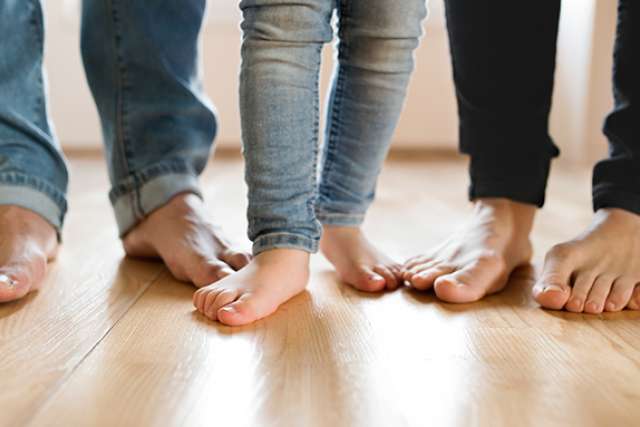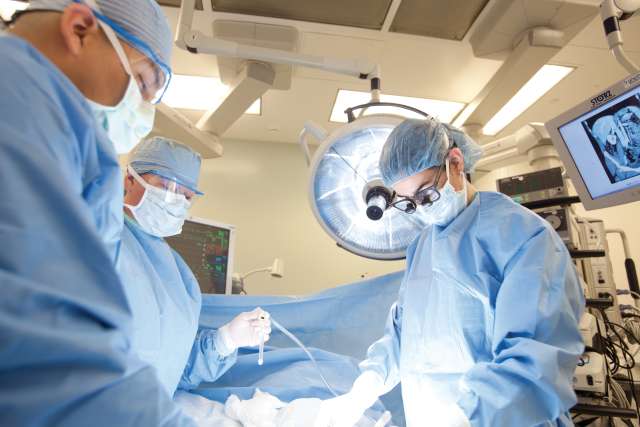Most Americans will have walked 75,000 miles by the time they reach the age of 50 – the equivalent of trekking around the Earth on the equator three times.
But all this walking results in significant wear and tear on our feet.
“Regular foot care at every age is important,” said , orthopaedic surgeon and foot specialist at in Santa Monica. “But understanding the changes feet undergo over time can help minimize age-related issues and pain.”
The most obvious sign your foot is aging is its changing size and shape, says Williams. Over time, the body’s ligaments and tendons lose their strength and ability to spring back. In feet, this manifests as a decrease or ‘’falling’’ of the arch, which flattens and lengthens the foot and toes. The result: often an increase in shoe size by a half-size or more.
“Unfortunately, many people, especially women, don’t realize that foot size can change, so they buy the same size shoe year after year without stopping to ask, ‘do my feet hurt when I put these on?,’” says Williams. “Shoes with a narrow toe box – and of course, high heels -- can also become more difficult to wear. So wearing well-fitting and more ‘sensible’ shoes, at least most of the time, will be much more comfortable.”
Shifts in foot shape can also cause bunions, a bony protrusion on the side of the big toe that grows as the toe drifts out of position. Hammertoe, a condition that frequently accompanies bunions, is when a toe – most frequently the second toe -- is pulled back and upward in relation to the other toes.
Bunions are more common among women (more than 30 percent overall suffer from them) because of their shoe-wearing habits, but men suffer from them as well. Family history often plays a role.
Bunion pain can become quite severe, making walking difficult. “Bunion splints aren’t much help – so unfortunately, surgery is the only way to successfully reposition the toe. Because bunion surgery "is invasive and has a long recovery time, I recommend it only if the pain is so bad it interferes with daily life,” say Williams.
Arthritis is another reality for the aging foot. Osteoarthritis can develop after years of general wear-and-tear and stress or injury to the joints. Approximately half of older people will develop osteoarthritis in one or more of the 33 joints in their feet, although not everyone will experience symptoms. For those who experience pain that they can't tolerate, over-the-counter medication or other treatments may help. Gout, a metabolic disease characterized by intense swelling and pain at the big toe joint, is another type of arthritis.
Older people with chronic conditions are much more likely to develop foot problems. Many diabetics suffer from diabetic neuropathy, a condition characterized by the loss of sensation in the feet. If the skin of the foot breaks unnoticed, wounds can easily become infected. Circulatory problems related to heart disease can also affect the fee, and obesity places extra stress on the feet and ankles.
Unfortunately, toenail fungal infections plague up to one-third of all older people, and corns, calluses and other foot deformities also are common.
There are a number of steps one can take to lessen foot pain or mitigate the effects of deteriorating ligaments, arthritis and other foot issues.
Don’t minimize or ignore foot pain. Many people live with foot pain or do not seek medical attention until the discomfort is too great for them to endure. “Foot pain is never normal,” says Williams. “If you have it, see a foot specialist so it can be diagnosed and treated.”
Consider orthotics. Orthotics or shoe inserts can support falling arches and increase comfort. Podiatrists offer custom-made insoles, which range from $200 to $800 a pair. Non-custom insoles, which are not as sturdy, usually cost between $20 and $70. Both provide support and padding for the feet, which is especially helpful for those who must stand for long periods of time or who participate in activities that put extra pressure on their feet.
Pay attention to your overall health. Monitor your feet for wounds, numbness or excessive swelling. Any of these can be symptoms of conditions that require medical treatment.
Do what you can. Stretch for a few minutes in the morning to reduce joint stiffness. Take over-the-counter medications to help reduce pain and swelling. Lose extra weight to reduce added stress. Keep your feet clean and dry. Wear comfortable shoes whenever possible, especially when walking long distances.
“It’s important to take good care of our feet,” said Williams. “They play a vital role in our health and well-being as we age.”



